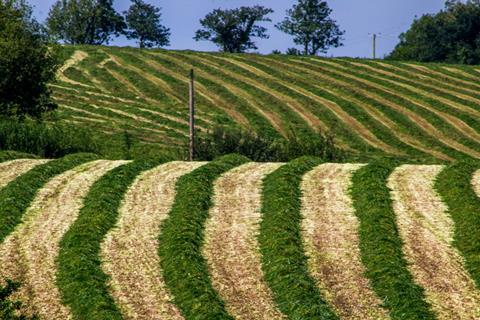Changes in silage production could help cut greenhouse gas emissions from agriculture. Agriculture is the largest source of nitrous oxide (N2O) emissions in the United States. N2O is the third most impactful greenhouse gas, yet one potential source—silage—has not been thoroughly studied.

Silage, which is moist, harvested plant material used to feed livestock during the winter, is preserved through fermentation. During this process, anaerobic bacteria produce lactic acid, which prevents the plants from spoiling. Jeongdae Im and colleagues suggest that silage could be a significant source of N2O emissions.
READ MORE: PGPR Strategies for Climate-Resilient Agriculture
READ MORE: Red clover losses in forage mixtures are linked to soil pathogens - and how far south they are
The authors estimated the N2O emissions from simulated silage of three major crops commonly used in the US: maize, alfalfa, and sorghum. Monitoring these crops over four weeks revealed that all produced substantial amounts of N2O, indicating that forage conservation could be the third largest contributor to agricultural N2O emissions.
Useful additive
The addition of chlorate dramatically reduced N2O emissions from all crops, suggesting that chlorate could serve as a useful additive in silage production to lower greenhouse gas emissions.
The findings also suggest that the N2O emissions from silage are primarily produced by denitrifying bacteria, not nitrifying bacteria, as shown by experiments with chlorate and varying oxygen levels as well as molecular studies.
The authors propose that further research into the use of denitrification inhibitors like chlorate in silage could significantly reduce emissions from what appears to be the third largest source of N2O in agriculture.







No comments yet